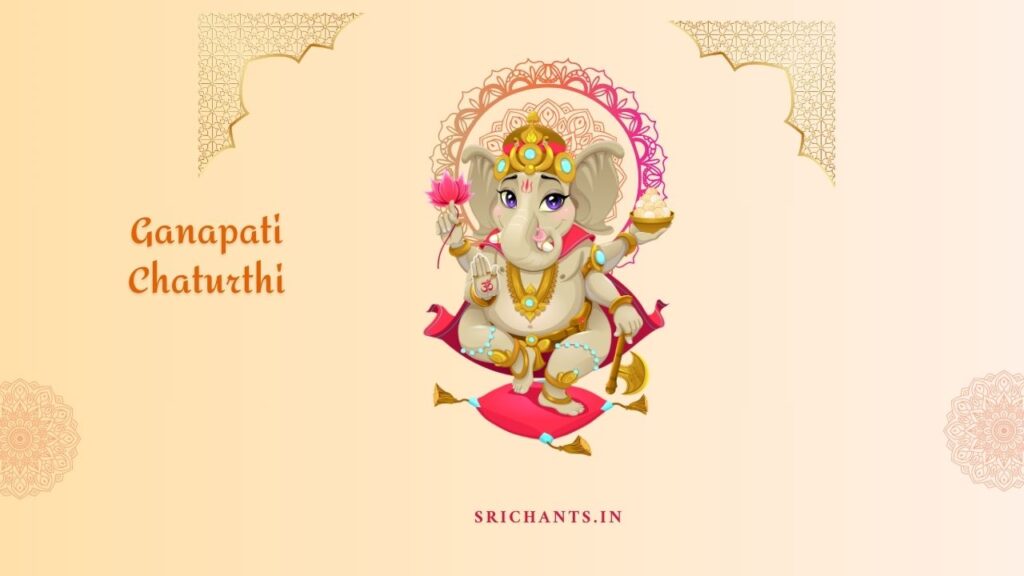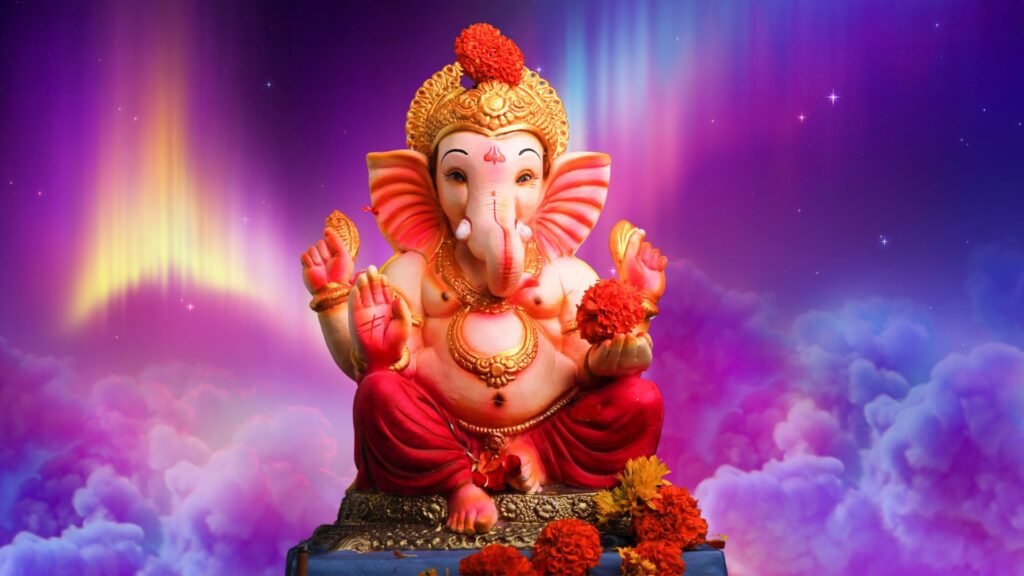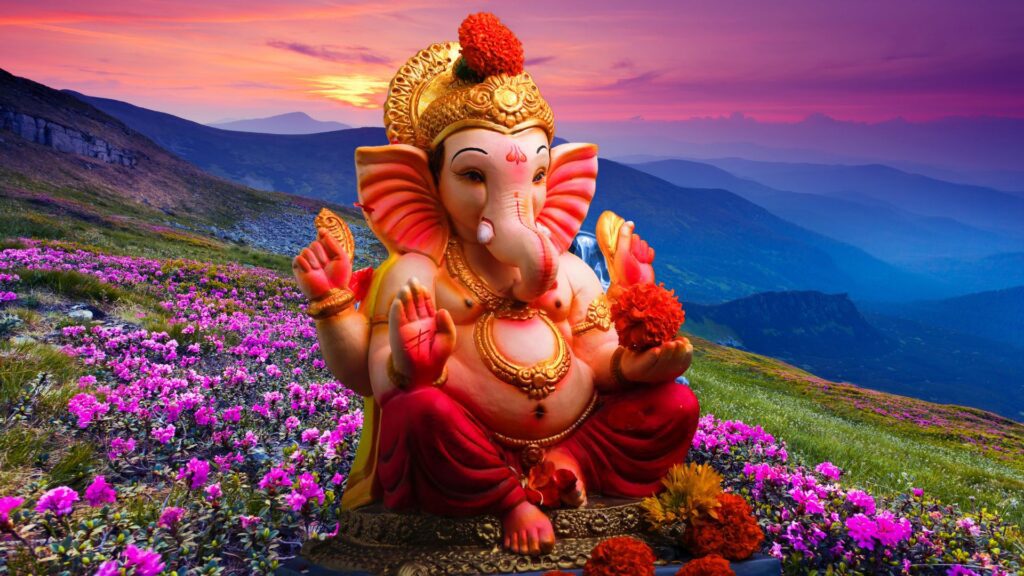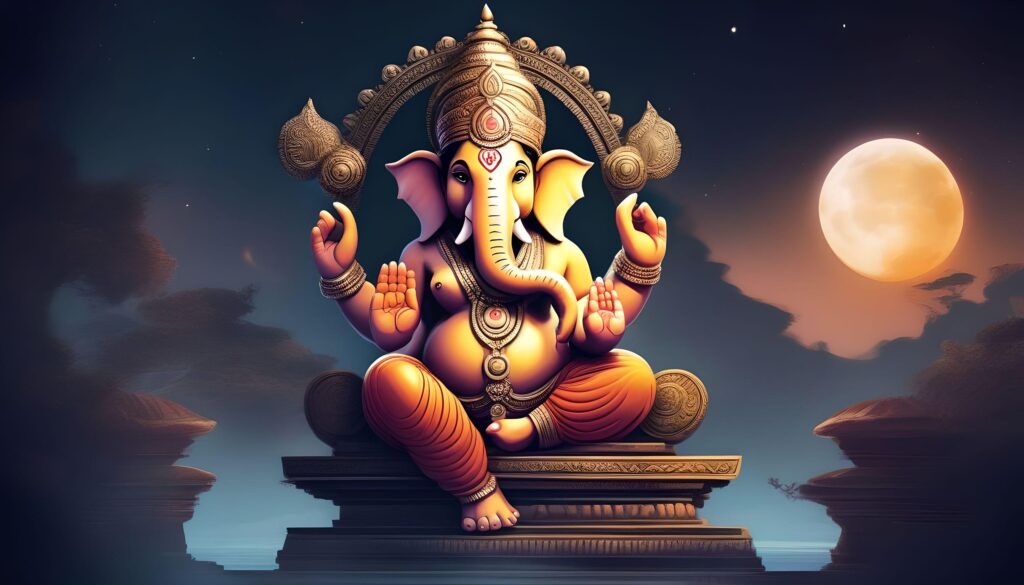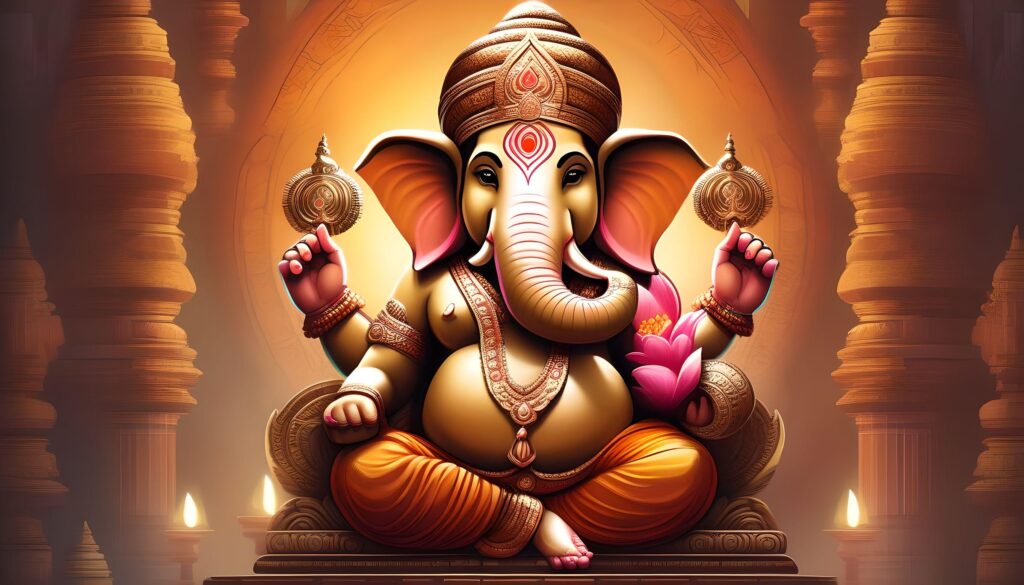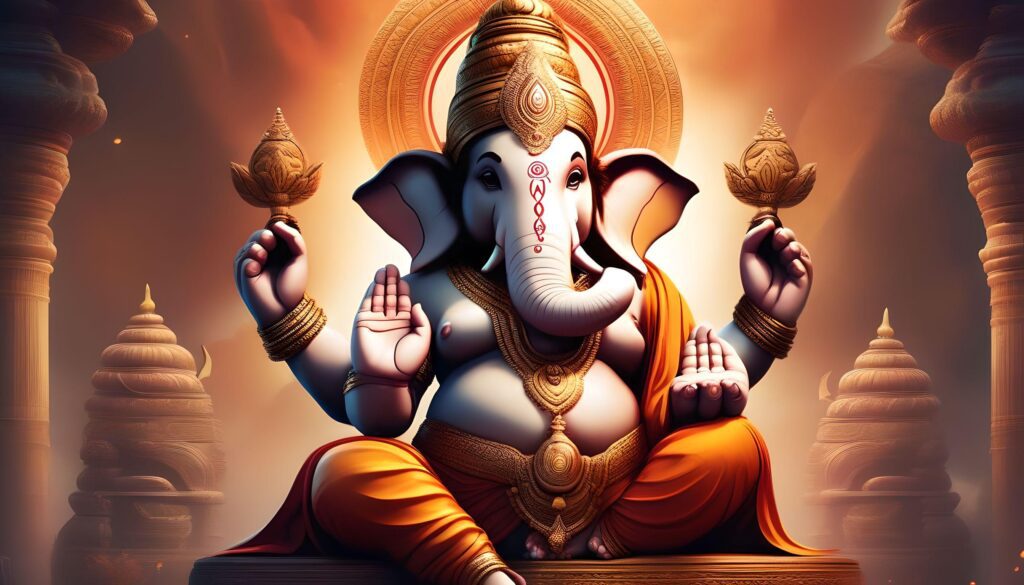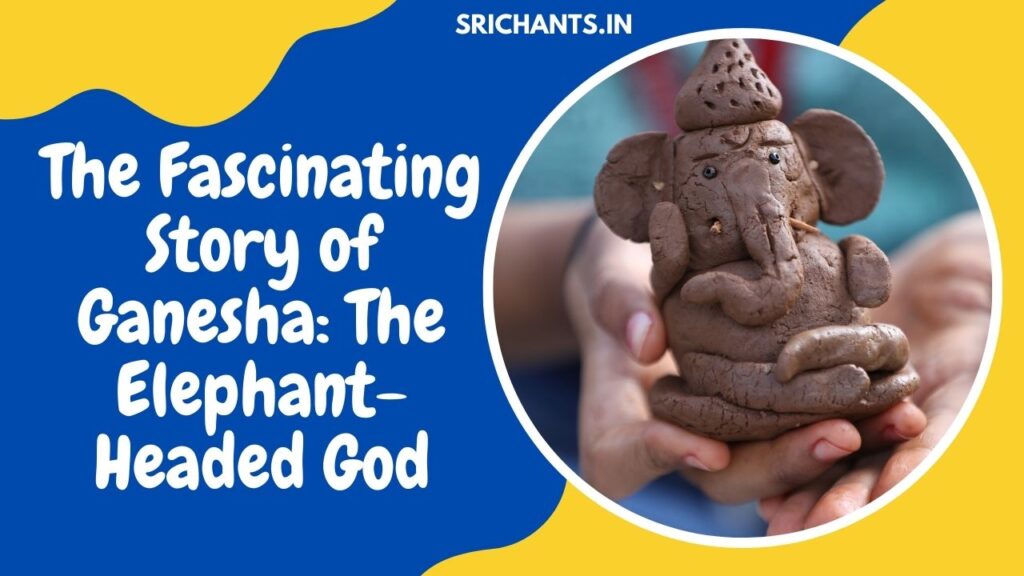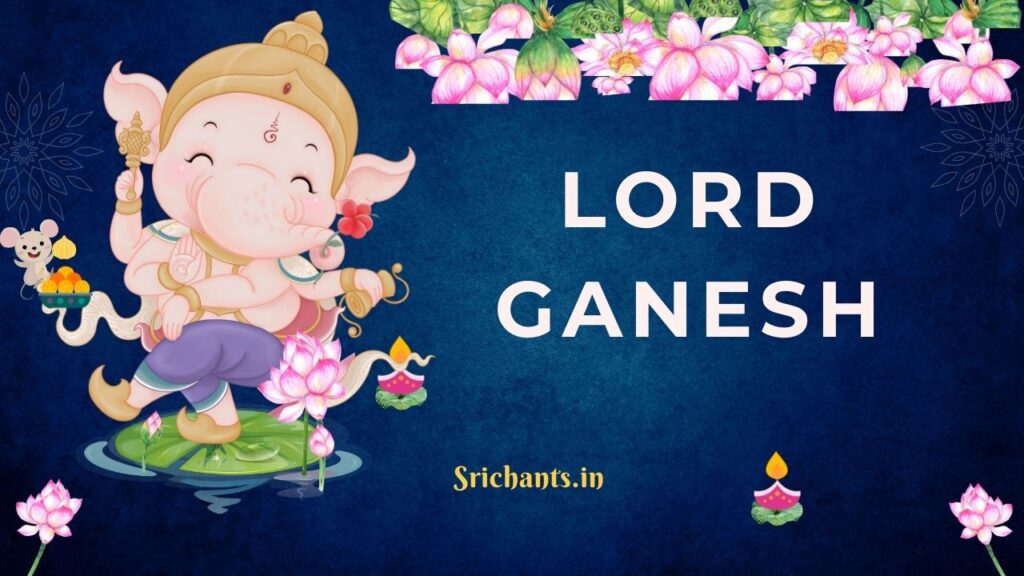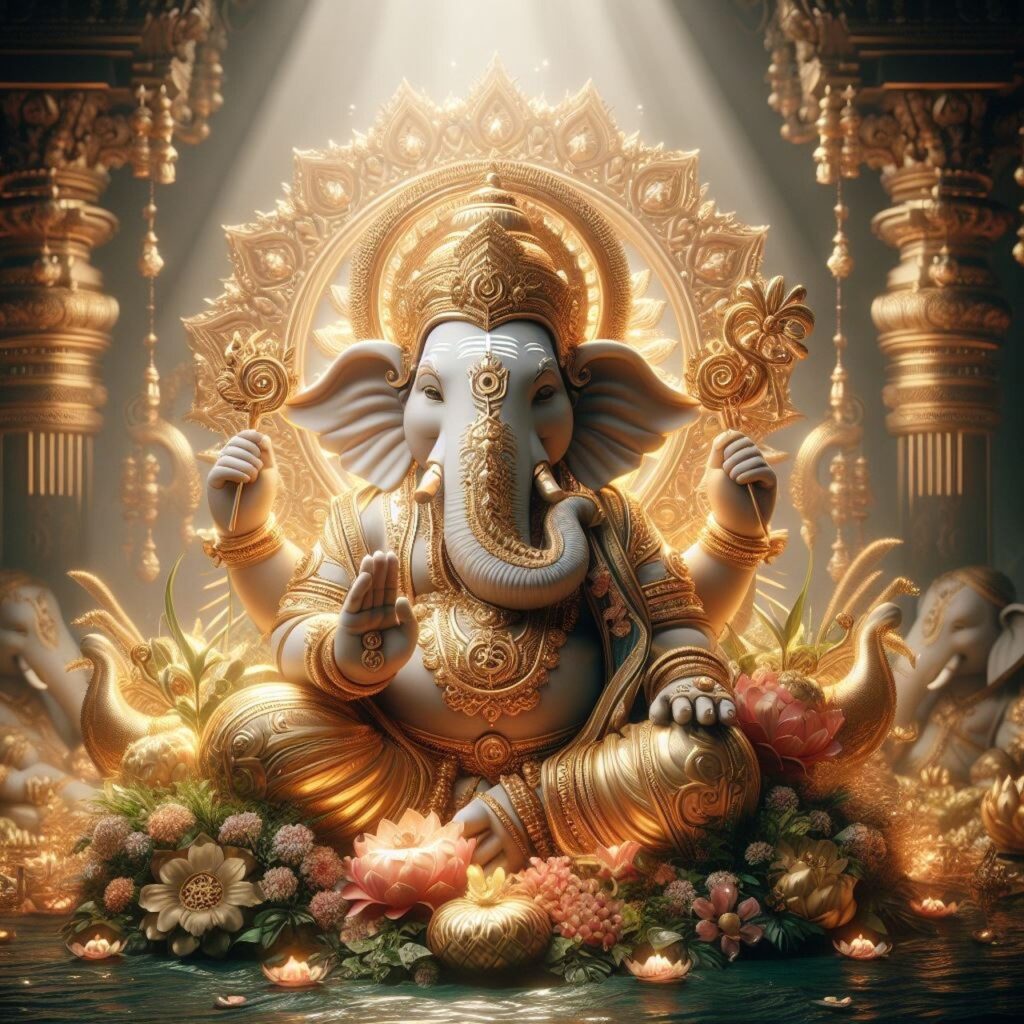Ganapati Chaturthi: A Celebration of Lord Ganesha
Introduction
Ganapati Chaturthi, also referred to as Vinayaka Chaturthi or Ganeshotsav, is a Hindu festival that commemorates the birth of Lord Ganesha, the elephant-headed deity. It lasts for ten days. This auspicious festival is widely observed by Hindu communities worldwide and in India. A sense of pleasure and devotion, elaborate decorations, and vibrant rituals are the hallmarks of Ganesh Chaturthi. This article will investigate the rituals, customs, and significance of Ganesh Chaturthi, elucidating the spiritual practices and rich cultural heritage that are observed during this festive event.
Getting to Know Lord Ganesha
In Hinduism, Lord Ganesha is considered one of the most revered deities. He is recognized as the deity of wisdom, prosperity, and good fortune, as well as the remover of obstacles. Devotees hold a special place in their hearts for Lord Ganesha, who is readily identifiable by his elephant head and portly figure. It is believed that he bestows success and removes any obstacles that may come in the way, which is why his blessings are sought before the commencement of any important endeavor.
The Significance of Ganesh Chaturthi
Ganesh Chaturthi is of immense religious and cultural importance. It is believed that Lord Ganesha descends to the earthly domain during this festival to bless his devotees. The festival commences on the fourth day of the Hindu month of Bhadrapada (August or September) and concludes with the spectacular immersion of Ganesha idols in water bodies. It lasts for ten days. The festival is celebrated with a great deal of enthusiasm and devotion, uniting communities in a joyful celebration.

Rituals and Customs of Ganesh Chaturthi
Several rituals and customs are observed with great reverence during Ganesh Chaturthi. Let us explore the customs that are associated with this auspicious festival:
1. Bringing Home the Idol
The festivities initiate with the installation of Ganesha idols in public pandals and residences. Clay idols of Lord Ganesha are brought home by devotees and arranged in altars that have been specially embellished. The idol is typically accompanied by miniature idols of Lord Ganesha’s consorts, Riddhi and Siddhi. Throughout the festival, devotees offer petitions and perform rituals, and the idol is adorned with flowers, garlands, and traditional attire.
2. Prana Pratishta: Invoking the Divine Presence
Prana Pratishta is a ritual that is performed on the first day of Ganesh Chaturthi. This ritual entails the invocation of the divine presence or life force into the idol. In order to imbue the idol with spiritual energy, the chaplain recites sacred mantras and performs rituals. Lord Ganesha is believed to be present in the idol at this moment, prepared to take the devotion and offerings of his devotees.
3. Shodashopachara: Worship with Sixteen Offerings
The Shodashopachara ritual, which translates to “worship with sixteen offerings,” is conducted on a daily basis during Ganesh Chaturthi. Flowers, fruits, desserts, incense, lamps, and water are among the sixteen distinct items that devotees present to Lord Ganesha. Each offering is believed to be symbolic and to please Lord Ganesha, thereby invoking his blessings. The devotees convey their devotion and seek the deity’s grace by chanting prayers and mantras.
4. Ganpati Visarjan: Immersion of the Idol
Lord Ganesha’s idol is submerged in water on the final day of Ganesh Chaturthi, which is referred to as Anant Chaturdashi, to symbolize his return to his celestial residence. This ceremony, known as Ganpati Visarjan, is characterized by fervent chanting, dancing, and processions. Lord Ganesha was bid farewell by his devotees, who sought his favors for the upcoming year and expressed their gratitude for his presence.
5. Eco-Friendly Celebrations
In recent years, there has been an increasing recognition of the environmental consequences of Ganesh Chaturthi celebrations. Numerous communities have transitioned to eco-friendly celebrations in order to advance sustainability and safeguard the environment. Eco-friendly idols constructed from clay or natural materials are replacing conventional plaster-of-paris idols. The ecological balance of water bodies is preserved and pollution is minimized by the design of these idols to dissolve readily in water.

Preparation and Preparations
In order to guarantee a successful and joyful celebration, Ganesh Chaturthi necessitates meticulous preparations. We will examine the preparations that were made for this auspicious festival:
1. Cleaning and Decoration
Houses and public spaces are meticulously cleansed and adorned prior to the festival’s commencement. The devotees guarantee that the area in which the idol will be positioned is spotless and adorned with traditional motifs, lights, and flowers. The spiritual atmosphere is elevated by the vibrant and festive milieu that the decorations establish.
2. Obtaining the Puja Items
Devotees accumulate indispensable pooja items in order to execute the rituals and ceremonies. Flowers, incense, lamps, fruits, candies, and traditional puja accessories comprise this assortment. The devotees guarantee that they possess all the essential components required to execute the rituals and present them to Lord Ganesha with reverence.
3. Installation of the Idol
The idol’s installation is a critical phase of the Ganesh Chaturthi preparations. The designated location for the idol’s installation is covered with a clean cloth or a decorative platform. The idol of Lord Ganesha is subsequently positioned on the platform with the utmost care and reverence. During the puja, the devotees conceal the idol with a cloth and then reveal it.
4. Inviting Lord Ganesha
Lord Ganesha is officially invited to the residence or community pandal prior to the commencement of the puja. The devotees perform a ritual called Avahana, in which they invite Lord Ganesha to receive their offerings and blessings and invoke his presence. An environment of reverence and devotion is established through the prayer offering and mantra recitation.
5. Ganesh Chaturthi Puja
The traditional rituals are strictly adhered to and the Ganesh Chaturthi Puja is performed with great devotion. In order to obtain the blessings of Lord Ganesha, the devotees offer petitions, chant mantras, and perform aarti. The puja is conducted in accordance with the sixteen-fold worship (Shodashopachara) ritual, in which devotees present sixteen distinct items, as previously mentioned. The puja’s sanctity is further enhanced by the chanting of Puranik Mantras.
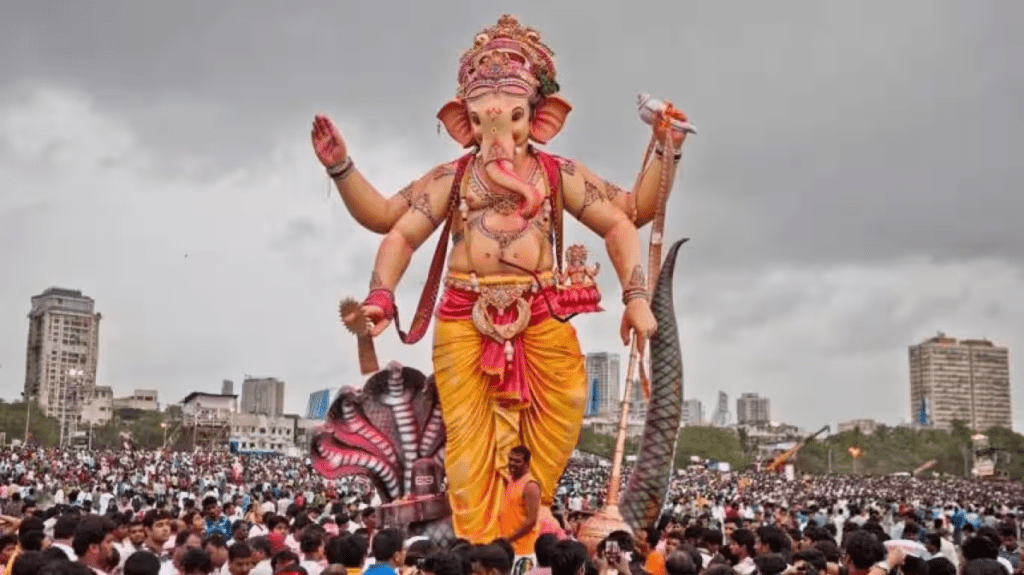
Fasting Rules for Ganesh Chaturthi
Devotees who observe a fast during Ganesh Chaturthi follow certain rules and guidelines. Here are the fasting rules commonly followed during this auspicious festival:
- Beginning the Day with a Cleansing Bath: Devotees commence the day with a ritual bath, which symbolizes the purification of the body and psyche.
- Daybreak to Moonrise Fasting: The fast is observed from the moment the sun rises until the moon rises on the same day. Devotees refrain from consuming any solid food or beverages during this time.
- Satvik Meal: Devotees consume a satvik meal when it is time to break the fast. Fruits, milk, byproducts, fruit juice, kheer, rajgira, bhangra, and singhara are all considered satvik delicacies. Steaming, simmering, or shallow frying are the preferred cooking methods.
- Chanting Mantras and Prayers: Devotees dedicate the day to prayer and meditation, reciting mantras that are dedicated to Lord Ganesha. They pray for the deity’s favors and demonstrate their devotion by reciting sacred chants.
Celebrating Ganesh Chaturthi
Ganesh Chaturthi is a period of communal bonding, celebration, and pleasure. The festival is commemorated in the following manners:
- Community Pandals: Numerous communities collaborate to construct elaborate pandals or temporary structures to accommodate the Ganesha idols. These pandals are adorned with vibrant decorations, flowers, and lighting. Devotees visit these pandals to offer their petitions and seek the blessings of Lord Ganesha.
- Cultural Performances: Ganesh Chaturthi is distinguished by cultural performances, which encompass traditional bhajans, dance, and music. Devotees exhibit their love and devotion through music and dance by singing devotional songs in praise of Lord Ganesha.
- Processions: The festival concludes with elaborate processions, which are referred to as Ganesh Visarjan. Music, dancing, and chanting accompany the carrying of Lord Ganesha’s idols through the streets by devotees. The procession concludes with the immersion of the idols in water bodies, which represents Lord Ganesha’s return to his celestial habitation.
- Social and Environmental Initiatives: In recent years, there has been a concerted effort to commemorate Ganesh Chaturthi in a manner that is both environmentally benign and socially responsible. Numerous communities advocate for sustainable practices and eco-friendly deities that are constructed from biodegradable materials in order to safeguard the environment.
Conclusion
Ganesh Chaturthi is a festival that is both vibrant and joyful, commemorating the birth of Lord Ganesha. The rich cultural heritage of India is reflected in the rituals, customs, and preparations associated with this festival. The blessings of Lord Ganesha and the fortitude to surmount obstacles in their lives are sought by devotees through prayers, offerings, and devotion. Devotees send farewell as the idols of Lord Ganesha are submerged in water, carrying the love and grace of the Elephant God. Ganesh Chaturthi serves as a reminder of the significance of spirituality, unity, and environmental consciousness, in addition to uniting communities.
#GanapatiChaturthi #Ganapati #Chaturthi #ganeshchaturthi #ganesh #festival
